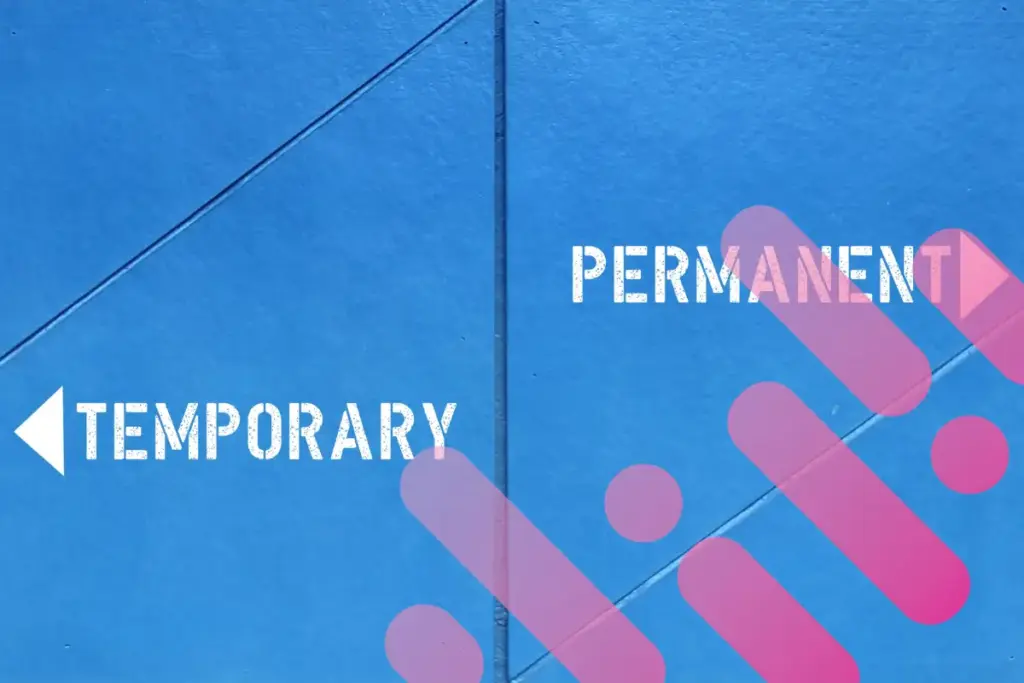
Is the Workforce Going Temp?

The American workforce is changing fast. People are choosing temporary or contract work over traditional full-time jobs now more than ever. This shift affects how companies hire and how workers build their careers.
The Numbers Tell the Story
The temporary workforce is larger than most recognize. Nearly 3 million temporary and contract workers constitute the payroll of US staffing firms during an average week, which indicates that flexible work arrangements are attractive to many.
What is particularly interesting is that the gig economy has grown to represent 16.4% of the US labor force. Some 25-30 million workers are doing gigs, and it is not slowing down.
The international gig economy totaled $556.7 billion in 2024 and is anticipated to hit $2 trillion by 2033. This data proves that temporary employment is not a trend but a future reality.
Why People Choose Temp Work
Temporary workers differ in their reasons for temping. 64% of staffing workers engage in temporary or contracted work to fill a gap between jobs or to gain a job. They use temping as a stepping stone towards permanency.
And that’s not even the end of it. 20% of temporary and contract employees identify schedule flexibility as the main reason they prefer this form of employment. They need to control their time.
Younger workers, specifically those aged 18-29, account for this change. Young adults aged 18-29 make up 30% who have ever done some form of gig work. They grew up with technology and demand flexibility in the workplace.
Most temps aren’t part-time workers, either. 73% of staffing workers labor full-time, which suggests that temping can be a form of steady income.
What Industries Use Temp Workers Most
Some industries depend heavily on temporary workers. Transportation and material-moving occupations constitute the largest share, with a percentage of 25.28% of all temporary workers.
Production jobs rank next at 17.24%, and office and administrative support at 12.92%. These jobs need workers who can be brought in quickly and who can easily adapt to changing requirements.
Temporary workers are not limited to entry-level workers, however. Highly skilled workers also go temp. About 40 percent of professional staffing workers engage in professional occupations, including managerial, engineering, information technology, science, and health careers.
The best-paying temporary industry is in management. They make, on average, $130,000 a year. Computer and math occupations make approximately $101,660 a year, which shows that temporary positions can be well-paying.
Companies Are Embracing Temp Workers
Firms are shifting their hiring approach. 64% of employers aim to increase the use of freelance professionals. They see benefits in hiring temporary employees.
Companies utilize temporary workers for various purposes. They can grow rapidly during periods of peak demand, hire experts for specific tasks, and pre-screen workers before offering permanent positions.
The business itself is huge. The US staffing industry will be a $198.7 billion business in 2025. There are approximately 26,000 recruitment and staffing companies in the US.
Technology is also making it more straightforward to locate and organize temporary workers. Seventy percent also utilize AI in some capacity, which is more effectively linking workers with positions.
The Challenges of Going Temp
Temping is not a perfect world. There are some genuine downsides for workers. Pay can be irregular, and benefits are usually nonexistent or limited.
Only 16% of freelance workers have retirement coverage, compared to 52% of full-time employees. This has the long-term potential to create financial vulnerabilities.
One example is health insurance. 24% report that they lack health insurance, and affordability is the main stumbling block for most.
There are also temp workers who earn less than the minimum wage. It is estimated that 14% of gig workers earn less than the Federal minimum per hour. This is evidence that not every temp job is well-paying.
The Future Looks Temporary
Several trends foretell temp employment’s continued growth. Working from home is today the norm, allowing companies to hire temporarily from anywhere.
The economy is uncertain. Companies require flexibility to quickly change their labor force, and temps give them that flexibility.
Employees desire greater control in their careers. They prefer not to be in a static job for their entire career, so temporary employment lets them experience a variety of companies and careers.
Technology continues to evolve. Better platforms reduce the friction in temping, and automation and artificial intelligence make it easier to match workers with jobs.
Almost half of Americans, nearly 50% by 2025, will be gig workers, a dramatic shift in how Americans work.
What This Means for Different Groups
This trend is both a promise and a risk for workers. They can earn a good income and be flexible, to be sure, but they also have to pay for benefits and career growth themselves.
Temporary workers save companies money and offer businesses flexibility. However, new systems are needed to manage a flexible staff and consider the corporate culture when most employees are temporary workers.
Shifting this system would make the economy more efficient and innovative. However, without protections for temp workers, inequality can also be heightened.
Regional Differences
The gig economy workers are not evenly distributed around the country. Florida tops the list in terms of the percentage of gig workers, at 22%, and California is second, at 20%.
Different locations hire different types of temps. Technology hubs have more freelance developers and designers, and industry parks have more temporary manufacturing workers.
Looking Ahead
The labor force is trending toward temporary labor. Young laborers want flexibility, and companies need to be agile.
This change also raises challenges. Workers need higher levels of protection and entitlements, different forms of management, and society’s institutions to adapt to a more flexible labor force.
The question is no longer whether the workforce is going temporary. It’s how quickly it will happen and how well we’ll adapt to it.
Ready to Navigate the Changing Workforce?
Whether you’re looking for temp roles or hiring temp workers, the job market is changing constantly. At Hunter Recruiting, we know those labor trends and can help you make the right decision for your business or career.
Our experienced staff pairs experienced professionals with organizations that value flexibility and skill. We also handle onboarding, payroll, taxes, and other administrative duties so you can focus on your core objectives. Contact us today to see how we can help you thrive in the future workplace.
If you are a job seeker, you can view our current temporary contract jobs here!













